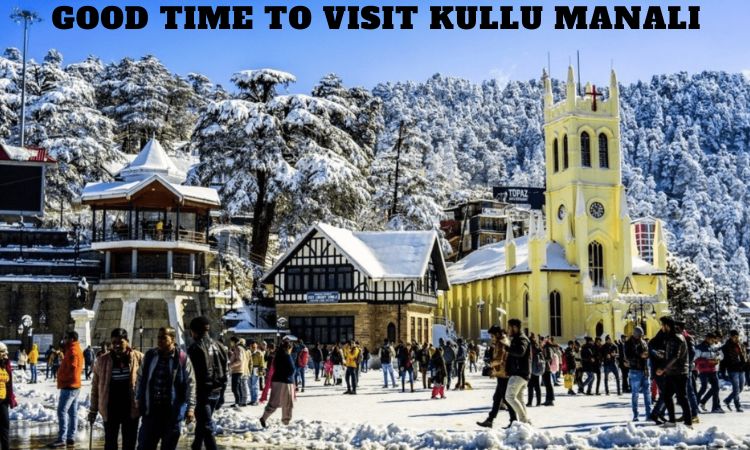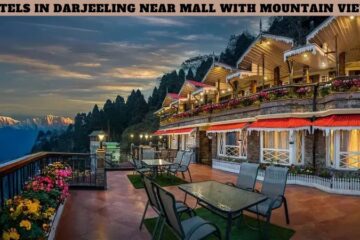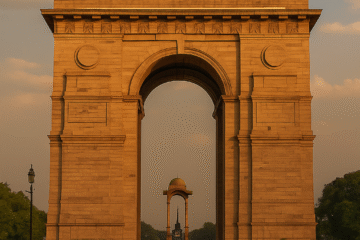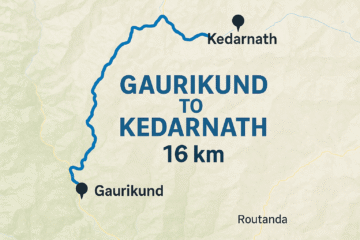
Kullu and Manali, nestled in the breathtaking Beas River Valley of Himachal Pradesh, are renowned for their stunning landscapes, vibrant culture, and a plethora of adventure activities. Determining the good time to visit Kullu Manali is crucial for planning a memorable trip, as each season offers a unique experience.
Understanding the Seasons of Kullu Manali
Kullu Manali experiences four distinct seasons, each with its own charm and appeal:
- Summer (March to June): This is the peak tourist season, characterized by pleasant and mild weather. Daytime temperatures typically range from 15°C to 25°C, making it ideal for outdoor activities and sightseeing. The landscape is lush and green, with vibrant flowers in full bloom. Nights are cool and comfortable.
- Monsoon (July to September): The monsoon brings heavy rainfall to the region, which can lead to landslides and disrupt travel plans. While the valleys become incredibly lush and the rivers swell, outdoor adventures like trekking and rafting are generally not recommended due to safety concerns. However, this season offers a serene and less crowded experience for nature lovers who don’t mind the rain. Temperatures range from 15°C to 20°C.
- Autumn (October to November): Autumn offers a delightful transition with cool, pleasant temperatures and clear blue skies. The landscape takes on a golden hue as the leaves change, providing stunning photographic opportunities. This is considered another good time to visit Kullu Manali for sightseeing, trekking, and enjoying the tranquil atmosphere before the winter chill sets in. Temperatures range from 10°C to 20°C.
- Winter (December to February): Winter transforms Kullu Manali into a magical snow-covered wonderland. Temperatures can drop below freezing, with daytime temperatures ranging from -5°C to 7°C. This is the best time for snow sports enthusiasts who can enjoy skiing, snowboarding, and snow trekking. However, it’s essential to be prepared for the cold weather, and some roads to higher altitudes like Rohtang Pass may be closed due to heavy snowfall.
The Good Time to Visit Kullu Manali Based on Your Interests
The good time to visit Kullu Manali largely depends on what you want to experience:
For Adventure Enthusiasts:
- Summer (March to June): This period offers the best conditions for a wide range of adventure activities.
- Trekking: The weather is ideal for exploring the numerous trekking trails, including popular routes like Hampta Pass, Beas Kund, and Chandrakhani Pass. The clear skies provide stunning views of the Himalayan peaks.
- River Rafting: The Beas River offers exhilarating white-water rafting experiences during the summer months when the water levels are suitable.
- Paragliding: Soar through the skies in Solang Valley or Marhi, enjoying panoramic views of the lush green valleys. The stable weather conditions make for safe and enjoyable paragliding sessions.
- Zorbing: Roll down gentle slopes in a large inflatable ball in Solang Valley for a unique and fun adventure.
- Mountain Biking: Explore the rugged terrains and scenic trails around Kullu and Manali on a mountain bike.
- Hot Air Ballooning: Experience the breathtaking beauty of the region from a unique perspective.
- Autumn (October to November): The cool and clear weather is also suitable for trekking and paragliding, with fewer crowds compared to the summer.
- Winter (December to February): If you are a fan of snow sports, winter is the good time to visit Kullu Manali.
- Skiing and Snowboarding: Solang Valley and Gulaba offer excellent opportunities for skiing and snowboarding on the snow-covered slopes.
- Snow Trekking: Embark on treks through the winter wonderland, experiencing the serene beauty of the snow-laden landscapes.
For Nature Lovers and Sightseers:
- Summer (March to June): The pleasant weather and blooming flora make summer an ideal time for sightseeing. You can explore attractions like Hadimba Devi Temple, Vashisht Hot Springs, Naggar Castle, and the scenic Solang Valley. The lush greenery and clear skies enhance the beauty of the surroundings.
- Monsoon (July to September): While not ideal for all outdoor activities, the monsoon transforms the valleys into a vibrant green paradise with gushing waterfalls and swollen rivers. If you enjoy the beauty of nature in its raw and refreshed form and don’t mind occasional rain, this season can offer a unique charm and tranquility.
- Autumn (October to November): The clear skies and golden foliage create a picturesque setting for sightseeing and nature walks. The crisp air and mild temperatures make it a comfortable time to explore the region’s natural beauty.
For Cultural Immersion:
Kullu Manali celebrates various festivals throughout the year, offering a glimpse into the local culture and traditions. If you are interested in experiencing the vibrant cultural scene, consider visiting during these times:
- Winter Carnival (January): This five-day festival in Manali showcases folk dances, music performances, street plays, and various competitions, promoting the local culture and attracting tourists.
- Spring Festival/Basantotsav/Pipal Jatra (April): Celebrated in Kullu, this three-day festival marks the beginning of spring with traditional dances and cultural programs. It is also recognized as a state festival.
- Hadimba Devi Fair (Spring): Held at the Hadimba Devi Temple, this fair features traditional dance performances and rituals to honor the local deity.
- Kullu Dussehra (October/November): Unlike the rest of India, Kullu Dussehra is a unique week-long celebration involving a grand procession of local deities in their palanquins, converging in the Dhalpur Maidan. This is a significant cultural event that attracts a large number of devotees and tourists.
- Losar Festival (January/February/March): Celebrated by the Tibetan community in Manali, this 15-day festival marks the Tibetan New Year with prayer services and the vibrant Chaam dance.
Monthly Breakdown of Weather and Activities:
To further help you decide on the good time to visit Kullu Manali, here’s a monthly overview of the weather and popular activities:
- January: Cold with heavy snowfall. Ideal for skiing and snowboarding in Solang Valley and nearby areas. The Winter Carnival is a major attraction.
- February: Cold with continued snowfall, especially in higher altitudes. Good for snow sports. The Phagli Fair in Kullu might also take place during this period.
- March: Transitioning from winter to spring. Snow starts to melt at lower altitudes, while higher regions still have snow. Pleasant days for sightseeing.
- April: Pleasant and mild weather. Ideal for trekking at lower altitudes, sightseeing, and the Spring Festival in Kullu.
- May: Warm and sunny days. Peak season for adventure activities like trekking, rafting, paragliding, and zorbing. The Doongri Forest Festival and Hadimba Devi Fair may also occur.
- June: Hotter days, but still pleasant for outdoor activities. Continues to be a peak season for adventure and sightseeing.
- July: Monsoon arrives with heavy rainfall. Landslides are possible, and outdoor activities are generally not recommended. Lush greenery prevails.
- August: Continued heavy rainfall. Travel can be disrupted due to landslides. The landscape is at its greenest.
- September: Monsoon starts to recede. The weather becomes pleasant again, with clear skies. Good for late trekking and sightseeing.
- October: Cool and sunny weather. Ideal for trekking, paragliding, and enjoying the autumn foliage. Kullu Dussehra is a major attraction.
- November: Cold but pleasant weather with clear skies. Good for sightseeing and lower altitude treks before the full winter sets in.
- December: Cold with snowfall, especially towards the end of the month. The region starts to transform into a winter wonderland, attracting snow lovers.
Important Considerations for Your Visit:
- Altitude Sickness: Kullu and Manali are situated at high altitudes. It’s essential to acclimatize properly upon arrival to avoid altitude sickness. Take it easy on your first day and stay hydrated.
- Road Conditions: Road conditions can vary depending on the season. During the monsoon and winter, landslides and heavy snowfall can cause road closures. It’s advisable to check the latest road conditions before planning your trip.
- Accommodation: Book your accommodation in advance, especially if you are visiting during the peak seasons (summer and winter) or during major festivals.
- Packing: Pack according to the season. Summers require light woolens, while winters demand heavy woolens, thermal wear, and snow gear. Carry rain gear if visiting during the monsoon.
- Permits: Some areas, like Rohtang Pass (when open), may require permits. Ensure you obtain the necessary permits in advance.
Conclusion:
In conclusion, there isn’t one single good time to visit Kullu Manali; it entirely depends on your preferences and what you seek from your trip.
- For adventure activities and pleasant weather, March to June and October to November are ideal.
- For snow sports and a winter wonderland experience, December to February is the best time.
- For those who appreciate lush greenery and tranquility despite the rain, July to September offers a unique charm.
- To immerse yourself in the local culture and witness vibrant celebrations, plan your visit around the festivals like the Winter Carnival, Spring Festival, Hadimba Devi Fair, or Kullu Dussehra.


